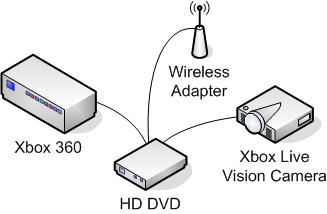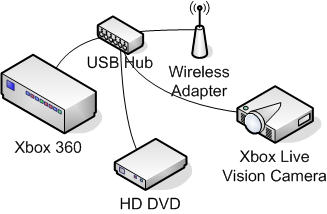So I was out Sunday night through Wednesday night at
MIX07, which was hella cool and well worth the
trip, but that means I didn’t really get much chance to blog the random
garbage that collects in my head, so here we go.
We bought this automatic light
switch
for the house that turns the exterior lights on and off. We wanted it
timed so we wouldn’t have to have someone watching the house. Home Depot
had two models - one was this sort of bulky-looking analog deal, and one
was this slick, clean digital one. For $1 extra, we bought the slick
digital one.
I’m not a big handyman around the house, but aside from some fairly
minor technical difficulties and a cat that just would not stop
stealing the screws to the faceplate, I got it installed.
Configuration, on the other hand… wow. This thing could pilot the
space shuttle by itself. I’m afraid I’m going to want to turn on the
lights and I’m going to hear HAL tell me he won’t allow the lights to go
on. It’s pretty cool once you get it set up, though. It knows, based on
your general location in the US, about when sunup and sundown are, and
you can tell it to automatically turn off at those times. Or, if you
don’t like that, you have seven different programmable on/off times -
one on and one off per day - that you can set. Or you can say “weekdays
I want this, weekends I want that.” Or, or, or. It’s almost too
configurable.
The automatic cat box worked out pretty well. I found it’s not really a
no-touch sort of thing; it requires interaction every couple of days.
But I can put up with that - it’s always nice and clean, and there’s a
certain cool factor about it.
Jenn is hobbling around the house because she blistered her feet so bad
walking around in Vegas. I feel bad for her, but I have to laugh - she
rented a car while we were down there specifically to avoid walking
around. That worked out well.
I’m stoked about Silverlight but I’ve got
to finish converting my blog over to Subtext before I start screwing
around with it. I also want to finish the
CR_Documentor
support for Sandcastle, which shouldn’t be overly difficult to do but
isn’t very fun and will just be a time consumer. I’d release it to the
world to help out on, but I can’t because there’s some proprietary stuff
in there left over from the original Lutz implementation and there’s
some crazy legal garbage stopping me. So I muscle through.
As far as the migration goes, I’ve got a BlogML converter to export my
blog entries with, but I have to create a mapping between the pMachine
entry IDs and the new Subtext IDs so I can put up a redirection
mechanism to allow folks coming in using the old links to be forwarded
to the new links. That’s taking a little bit. I was trying to write it
in a nice, reusable fashion (the ID mapping tool) so I could submit it
to… well, some project out there, anyway, but it’s taking far too much
time to do that and since I’m really only going to use the thing once,
I’ve got to scale back my effort and just get it done already. (Once I
have that, I can write the redirector, update my cross-post links,
figure out where my image content needs to go, and, finally, get Subtext
up and going. Yeah, it’s an effort.)
I had some Barnes and Noble gift certificates saved up so I ordered
Guitar Hero
II for my
Xbox 360. That should be here soon and should provide some serious fun.
I didn’t get into any of the MIX07 Guitar Hero action, but I’ve played
it in the store. I need to practice. The key really is all in getting
used to the controller.
Speaking of Xbox 360, we finally got the points codes from the latest
Red Ring of Death
debacle
so I’m going to spend some time tonight deleting and re-downloading all
of our Xbox Live content so I don’t have to be signed in when Jenn wants
to play an arcade game. They have to fix this. It’s ridiculous.
I got the Fergie CD The
Dutchess
and noticed a few things. First, the uncensored versions of the songs
make a lot more sense than the censored versions you hear on the radio.
I like the CD versions way better. Second, someone dropped the ball on
the mixing. There are a couple of songs where Fergie’s voice stands out
from the music in places like it doesn’t belong. It sounds… rushed.
Third, and final, someone really needed to run QA on the language
portion of the album. What the hell is “dutchess?” Is it ebonics for
“more Dutch than anyone else” (as in “I know you’re Dutch, but I’m the
Dutchess fool here”)?
(“Duchess” doesn’t have
a ‘t’ in it.) And in the first song, “Fergalicious,” they spell
“tasty” as “tastey” -
with an ‘e’ in it. What the…? Doesn’t anyone speak English anymore?
Our bad Jack cat is off getting declawed tonight and we’ll be picking
him up tomorrow. The vet called with an update after the surgery was
over and I guess he’s super wild and they can’t give him enough toys to
play with. I guess the fentanyl patch he’s got on isn’t slowing him down
a bit.
Jenn has become addicted to Hotel Dusk: Room
215. She
picked it up before we left for Vegas and hasn’t put it down. It looks
pretty good; I may have to play it.
I think that’s it. It’s been a heck of a week. Yesterday was
pretty-much a no-op, trying to get expense reports filed and get back up
to speed after being out of town, and today, frankly, I’ve had some
severe motivational difficulties. Hopefully things will return to normal
next week.


